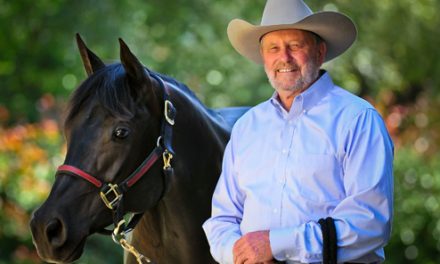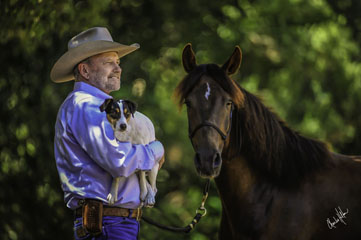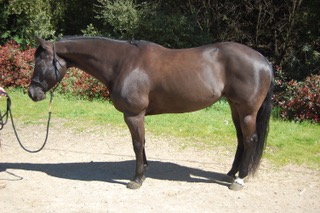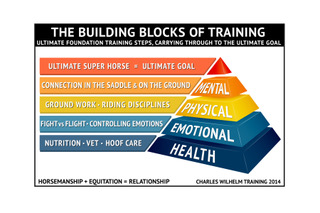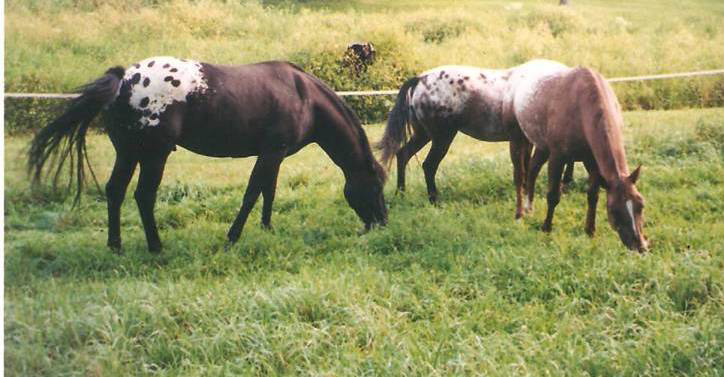
People think of abuse as a horse being beaten but there are many types of abuse that you might not even recognize. As mentioned in the previous article, neglect is certainly abusive but also spoiling a horse by not teaching it manners, failing to establish a good relationship with your horse with you as leader, over feeding a horse with grain as well as not shoeing a horse that needs shoes, these are all forms of abuse. There is a big thing about horses going barefoot. I’ve met people who have their horses barefoot after two years trying to toughen up the feet. The fact is that some horses do not well without shoes. The conformation of the foot or the thickness of the hoof wall or the sole can’t accommodate barefoot riding. I had a four-year old Mustang here at the ranch when I participated in the first Mustang Challenge and if that horse had not been caught, I believe it would have become bait for a mountain lion or coyote because the conformation of the feet was going to eventually cause lameness. So we can help our horses with shoeing and proper trimming. Some horses have feet like iron and do not need shoes. As an owner, you need to know what type of feet your horse has and have them cared for properly.
Some horses are afraid of plastic bags because they are different and crackle. Some will snort at the sight of a lariat and some are afraid of whips. We should not assume a horse has been beaten because it is afraid of a crop or lounging whip. If a horse is shy of a whip, we should teach the horse to overcome the fear, whether or not it was abused in that manner. Teaching your horse to accept a plastic bag, a tarp, or any object that the horse is afraid of, is good horsemanship and an important part of the well being of the horse.
I have seen many people rescue horses and immediately make them into therapy horses. I really believe this is a stupid and dangerous thing to do. These people rescue the horse and feed it for a few weeks then start putting disabled children and adults on it. A horse like this is in no way ready to be a therapy horse. If you have to warn the handlers not to walk on one side or touch the horse in a certain place the horse is certainly not safe for a disabled rider. Also, to me, this is abusing the horse because you are setting the horse up to fail.
We have therapy horses here at the ranch and we spend six to eight months preparing a horse and then we decide if the horse is a right fit for that special occupation. We have one therapy horse here that was a Western Pleasure horse and though he is very good, every once in awhile he needs a couple of weeks off to do something different. We have him do some reining and cavalleti work and then he is ready to come back into the program. To fail to give him that break would be abusive. All therapy horses should be maintained in training. They don’t have to do slide stops or jump four feet, but all therapy horses should be able to carry a flag, drag a tarp, have walkers on both sides of them, and have ropes dragging around their feet. These are things that can come up in a therapy program.
Sometimes we throw the term abuse around too loosely. For example I had a horse here for training that the owners called “the rogue” and they thought it had been abused. A woman had rescued this horse out of pasture and put it in a stall. She walked into the stall unannounced when the horse had his back turned and his head down eating. She startled the horse and he kicked her in the face. Good horsemanship is that you never walk up to the back of a horse until you let the horse know you are coming and make sure that horse’s hind end steps away from you. That is just good, practical common sense. The horse was labeled a rogue and it was decided that the horse must have been abused. Many times horses that come in with the label “abused” or “rescued” but they have just never had any good basic, common sense training or any formal training.
Finally, my point is that it doesn’t really matter whether or not a horse was abused or rescued. All horses need the same training and by taking the time to do it we can help ensure that down the road, the horse won’t ever need to be rescued.

